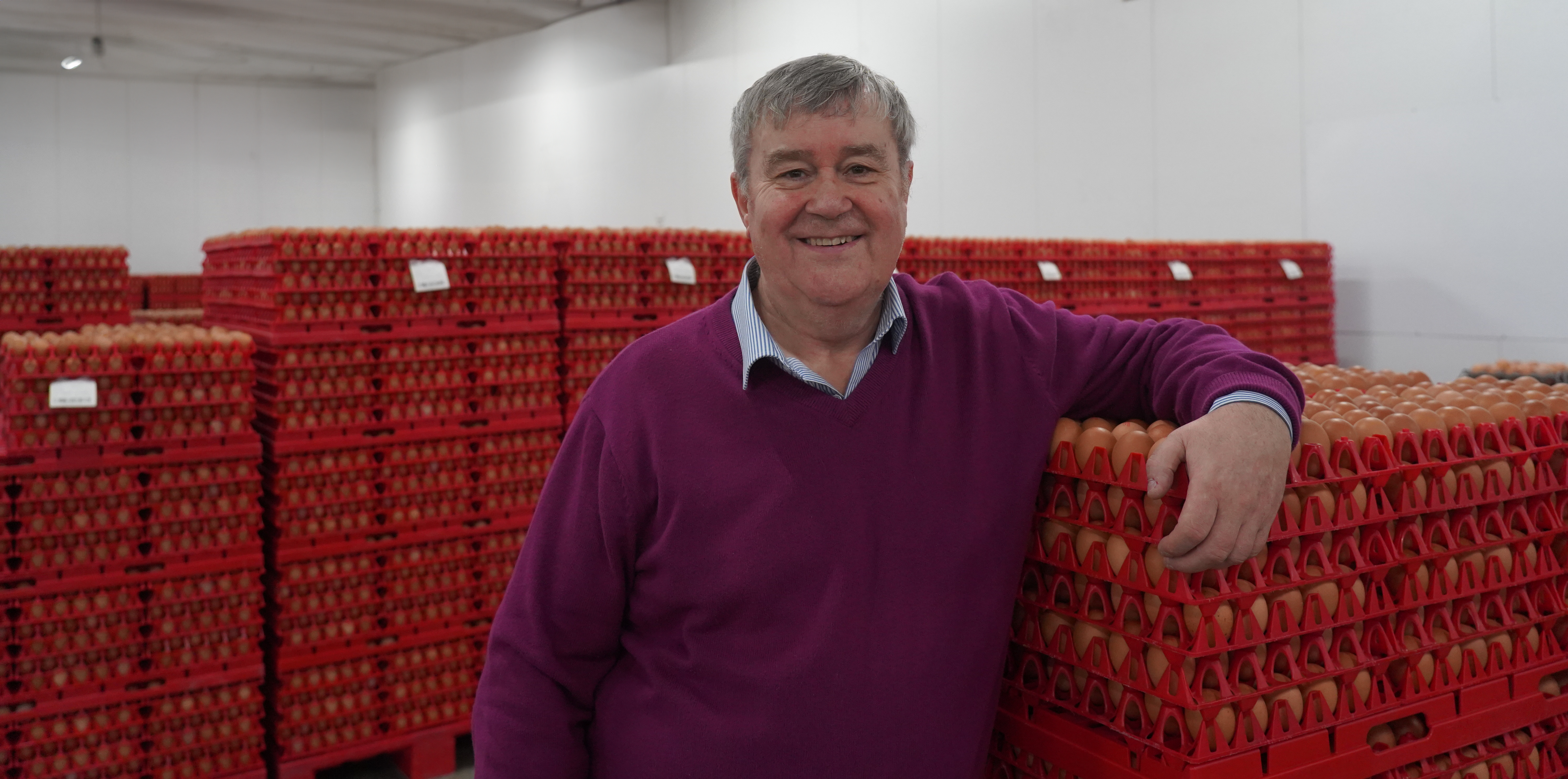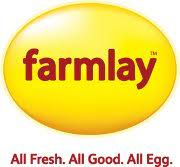Robert Chapman believes in treating hens like other high-performance animals – such as dairy cows or racehorses – with diet at the heart of good health and results
Through their Farmlay brand, the Chapman family are one of the best-known names in Scottish and UK egg production. Together with feed nutritionists Harbro they have been analysing how to make the most of the only 125g of feed a laying hen eats in a day.
“When you consider they are laying a 63g egg – so that’s half the ration gone already – it’s vital that every gram left for them to maintain themselves has earned its place in the feed mix. It is no exaggeration to say it has to be rocket fuel,” says Robert Chapman, Farmlay’s executive chair.
“Hens used to lay for around 250 to 270 days, but we now have some white birds that are getting to 500. It is down to genetics and feed, with the modern hen now akin to a dairy cow in that it’s an exceedingly high performing animal. Like any performance animal, such as a racehorse, it can easily get stressed and in my 50-odd years in the business – the genetic developments aside – it’s feed and the understanding of it that has been one of the biggest changes. Now everything we do is about prevention. Once a bird gets stressed – maybe because the feed is not quite right – then that’s when disease happens. Prevention is so much easier than trying to reverse any dip in health or performance.”
Rather like a racehorse trainer will feed according to peak performance requirements, such as morning exercise, a big shift in poultry nutrition is splitting rations and targeting feeding times.
With the industry under pressure from retailers and the wider public to find more sustainable alternatives to soya for flocks’ protein levels, feeding higher protein for the first eight hours of a hen’s waking day – when she needs the most energy for egg production – and then a more calcium-rich formula for the remaining eight when she is laying down the shell for the next day has been a real breakthrough.
Robert and his son, Iain – who took over the reins as managing director at the end of last year – put a large amount of their success down to the fact that they have remained farmers and, more specifically grain producers, at heart. Farmlay owns 450,000 hens and has a further 550,000 supplying eggs through contract producers.
Their 2,500-acre Cockmuir Farm, near Strichen, Aberdeenshire, grows 1,700 acres of cereals made up of winter and spring barley, winter oilseed rape and winter wheat. The remaining acreage is down to grass for their herd of 230 commercial suckler cows and woodland for free range hen habitats.
“As well as growing as much wheat as we can for feed, we also buy in cereals from neighbouring farmers for the 400-tons-a-week needed for the feed milling operation. This locally produced corn – that we can be 100% sure of the quality – is the best foundation for our feed mix.
“An aside is to say the water has to be right. The old saying that you should never give your livestock water that you would not drink yourself is absolutely true. We have invested a lot in boreholes and have water treatment on all our farms. Keeping the water clean and killing any bugs is very, very important to hen health.”
Where once it was used routinely, antibiotic usage has all but been eliminated out of the Farmlay flock. The firm’s ration, mixed daily by Harbro with one of its mobile milling units, is based on a basic formula of wheat, barley, soya and limestone granules.
More environmentally sustainable sources of protein to soya are being trialled, including rape meal, lupins, peas and beans.
Doug Steele, Pig and Poultry Sales Manager at Harbro Ltd has the task of overseeing the Farmlay ration and is the first to admit that when it comes to highly digestible protein with a good amino acid profile soya takes some beating.
“There is no getting away from the fact that pound for pound soya is the most effective and easiest way of getting protein into the diet,” says Doug. “Getting carbon footprint down is so much more complicated than just doing a blanket replacement of the soya – sometimes birds just don’t like the taste of the alternatives.
“What we now support is precision nutrition – feeding cleverer – by giving the right nutrients at the time of the day when they are really needed. This in itself is bringing down the amounts of soya used which, together with working hard on the alternatives, is having a significant impact. It makes sense that there is no point feeding protein for the entire day, when the birds don’t need it.”
Doug adds that while once birds would be reared until 16 weeks and then deemed as adults, research has shown that they are still growing until 30 weeks.
“People used to say ‘they’re reared’ at 16 weeks but we now know they are still growing and developing and it is vital, especially for gut health and shell quality, that we keep them on the right tracks. It is like a train and if we help them to stay on the right tracks for 30 weeks then they are away and will complete the journey. Without that additional nutritional support up until 30 weeks there is a chance they will come off the tracks.”
Doug rates gut health awareness as one of the poultry industry’s biggest breakthroughs. With grist size and formulations ever evolving, a new kid on the block is prebiotics in the form of essential oils, such as turmeric, oregano and cinnamon.
“As soon as birds are stressed, they will have a reduced feed intake and display a disturbed balance of gut flora,” explains Doug. “Toxins are produced and the birds flush these out through droppings with high moisture content, leading to dirtier eggs and an increase in eggs being downgraded.
“Essential oils have antibacterial, antioxidant, antiviral and antiprotozoan properties which not only help promote a healthy gut and aid food digestion but can even have an impact on coccidiosis. They have been a real gamechanger for the poultry industry.”
Promoting ‘good’ bacteria works in two ways, by actively producing lactic acid and by competitively excluding potentially pathogenic gut bacteria. Both essential oils and probiotics can be used all the time, as an insurance policy, or during spikes in environmental disturbance or changes in growth and poorer feed efficiency.”

